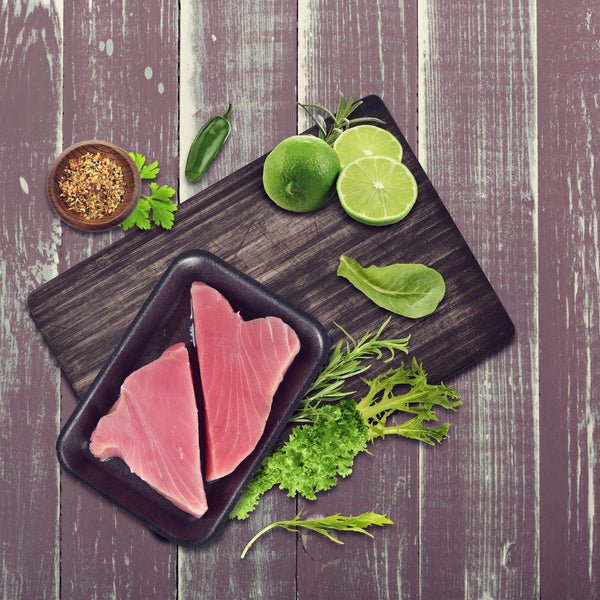Ahi Tuna Sustainability: Protecting a Culinary Treasure
Ahi Tuna, commonly referred to as Yellowfin Tuna, is a prized seafood beloved for its tender texture and rich flavor. Found in tropical and subtropical oceans, it is a key ingredient in popular dishes like sushi, sashimi, and grilled steaks. However, the rising global demand has placed immense pressure on Ahi Tuna populations, raising questions about its sustainability.
This article dives deep into the challenges of Ahi Tuna sustainability, efforts to protect it, and actionable steps consumers can take to make a difference.
Understanding the Importance of Ahi Tuna Sustainability
Ahi Tuna plays a vital role in marine ecosystems as an apex predator. Its decline can disrupt the delicate balance of ocean life, impacting everything from plankton to large marine mammals.
However, the Food and Agriculture Organization (FAO) reports that 34% of global fish stocks are overfished, with Ahi Tuna being a notable concern.
Why Is Ahi Tuna at Risk?
- Overfishing: Intense global demand for Ahi Tuna, particularly in sushi and sashimi markets, has led to excessive harvesting.
- Bycatch: Fishing methods like purse seining and longlining often catch unintended species, including turtles, sharks, and dolphins.
- Illegal Fishing: The World Wildlife Fund (WWF) highlights illegal, unreported, and unregulated (IUU) fishing as a major contributor to declining fish stocks.
“Sustainable fishing is not an option; it is a necessity to ensure the future of our oceans,” says Dr. Sylvia Earle, renowned marine biologist and oceanographer.
Efforts to Promote Ahi Tuna Sustainability
To address these challenges, governments, organizations, and fisheries are implementing measures to ensure the long-term viability of Ahi Tuna populations.
1. Sustainable Fishing Practices
Innovative and selective fishing methods are reducing bycatch and protecting marine ecosystems. Examples include:
- Pole-and-Line Fishing: Targets Ahi Tuna specifically, minimizing harm to other marine life.
- Circle Hooks: Designed to reduce accidental captures of non-target species.
2. Certification Programs
Third-party certifications like the Marine Stewardship Council (MSC) label assure consumers that the Ahi Tuna they purchase comes from responsibly managed fisheries.
3. International Agreements
Organizations like the Western and Central Pacific Fisheries Commission (WCPFC) enforce quotas and monitoring programs to combat overfishing.
How Consumers Can Support Ahi Tuna Sustainability
As consumers, your choices can drive demand for sustainable seafood and influence industry practices.
1. Choose Certified Sustainable Ahi Tuna
Look for products labeled as sustainably sourced by reputable organizations like the MSC or Friends of the Sea.
Explore sustainable options:
- Ahi Tuna Steaks
- Sushi-Grade Tuna Saku Blocks
2. Reduce Seafood Consumption
Consider diversifying your diet with plant-based proteins or lower-impact seafood options to lessen the pressure on Ahi Tuna stocks.
3. Support Local and Ethical Suppliers
Buy Ahi Tuna from trusted sources like Global Seafoods, which prioritize sustainability in their offerings.
The Culinary Appeal of Ahi Tuna
Despite sustainability concerns, Ahi Tuna remains a culinary favorite. With its firm texture and rich flavor, it lends itself to a variety of cooking methods.
Popular Ahi Tuna Recipes
-
Grilled Ahi Tuna Steaks
- Season with olive oil, salt, and pepper, and grill for 2-3 minutes per side.
- Pair with a side of quinoa or steamed vegetables.
-
Ahi Tuna Poke Bowls
- Combine cubed raw Ahi Tuna with soy sauce, sesame oil, avocado, and rice for a refreshing dish.
-
Sashimi and Sushi
- Thinly slice sushi-grade Ahi Tuna for a classic sashimi platter.
Shop Sushi-Grade Tuna
FAQ: Common Questions About Ahi Tuna Sustainability
Q1: Is Ahi Tuna endangered?
Ahi Tuna is classified as “Near Threatened” due to overfishing and environmental pressures. Conservation efforts are crucial to prevent further decline.
Q2: How can I identify sustainable Ahi Tuna?
Look for certification labels from organizations like the MSC, indicating responsibly sourced fish.
Q3: Can I still enjoy Ahi Tuna responsibly?
Yes, by purchasing certified sustainable products and moderating consumption, you can enjoy Ahi Tuna while supporting conservation.
Q4: What are alternatives to Ahi Tuna?
Consider other sustainable options like Albacore Tuna, Arctic Char, or responsibly farmed salmon.
Q5: What’s the best way to cook Ahi Tuna?
Grilling, searing, and sashimi are popular methods that highlight its natural flavor.
Conclusion: Ensuring a Sustainable Future for Ahi Tuna
Ahi Tuna’s popularity is a double-edged sword—it’s a culinary treasure but faces significant sustainability challenges. By choosing certified products, supporting ethical fisheries, and advocating for sustainable practices, we can protect Ahi Tuna populations for future generations.
Explore Premium Sustainable Seafood
- Ahi Tuna Steaks
- Albacore Tuna
- Bluefin Tuna
For recipes and tips, visit our YouTube channel. Together, let’s make a difference in protecting our oceans!



